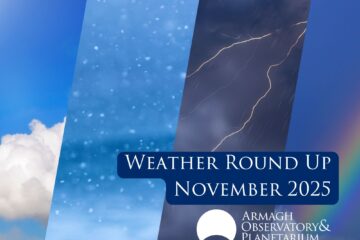Days are getting shorter
Nights are getting colder
If these shifts you savour
You’re a true stargazer
I am writing this piece sitting next to a window, having a cup of coffee, and watching it pouring down outside. Not the best day for stargazing, however, it is a good opportunity to think about the November night sky. Also, I hope you liked my little poem.
November is one of the best months of the year for stargazers in the Northern Hemisphere. Sunsets are relatively early, and you can enjoy the night sky from 6:30 p.m. until 6 a.m. during the month, and it is not too cold, yet!
Let us have a look at what we can see in the night sky.
Planets and the Moon
Jupiter is in the constellation Aries, and both the constellation and Jupiter will be in the night sky throughout the month. Jupiter seems like the brightest star in the night sky, so you cannot miss it. It is going to set from the West around 4:30 a.m., so you can locate it depending on the time you are observing by moving 15 degrees from West to South (and then to East) for each hour. Remember, celestial objects move about 15 degrees each hour in the sky.
Venus will be in the sky for only a couple of hours before sunrise. Jupiter will be handing over being the brightest star-looking object to Venus since Venus will be rising as Jupiter sets.
Saturn is in the constellation Aquarius and is visible right after sunset until 9 p.m. somewhere between South and Southwest directions. It seems like a bright star too; you can easily spot it.
There is a quite simple trick to identify if the object you are looking at is a star or a planet. Just carefully observe if their brightness varies. All the stars are twinkling, however, planets’ brightnesses do not vary unless they are too close to the horizon. So, you can easily spot planets from their steady brightness.
The best stargazing opportunity seems to be between the 11th and the 17th if you do not wish to observe the Moon since these nights will be the darkest as the Moon will not be around. However, if you wish to observe the Moon as well, then the 19th and 20th are the best options since the Moon will be about half-moon. The full moon of the month occurs on the 27th and this is not a good day for stargazing, it can be a romantic night with loved ones though.
Three Zodiac Signs in a Month
If you were born in November, you probably think that your zodiac sign is Scorpio or Sagittarius. But it is not true. Until the 23rd of November, the Sun will be in the constellation Libra. Between the 23rd and 29th, it is going to be in the constellation Scorpius, and on the last day of the month, it is going to enter the constellation Ophiuchus. Therefore, in one month the Sun will be in three different constellations and yes, your zodiac sign is probably different now, sorry.
Meteor Showers
Orionid, Taurid, and Leonid meteor showers will be active during the month; however, they are not the most exciting ones. The combined meteor count of these three showers is less than half of the infamous Perseid meteor shower. Nonetheless, if you can find a dark and clear sky, and if the Moon is not around, you should have it a go.
Best Stargazing Targets for Beginners
You are just starting, and you need some practice? I am listing the steps for you below.
– First thing first: Find the Big Dipper and locate the North Star (Polaris).
– Find the constellations Cassiopeia and Cepheus. These are always in the night sky as they are circumpolar constellations.
– Now follow the motion of the Big Dipper, Cassiopeia, and Cepheus with your naked eyes for an hour. Try to notice how they appear to circle around Polaris.
– If you completed the steps above, congratulations! You are now officially a stargazer! Now you know how stars move in the night sky due to Earth’s rotation.
Never buy binoculars or a telescope unless you complete the steps above. It would likely be a waste of money. If you already completed the steps and have a binocular/telescope, then you can start observing some cool objects. Jupiter, Saturn, and Moon are the best objects to start with. Most of the stars are quite boring since they look the same even with the biggest telescopes. However, if you like a challenge, try observing Albireo, a star in the constellation Cygnus. You will see something surprising!
If you do not own a telescope and/or want to learn and experience more, then join us at the Stargazing events. This month’s Stargazing Evening is on the 23rd. For more information, please visit our website at www.armagh.space.
Clear skies!
Kerem Osman Çubuk




1 Comment
Graham Bate · October 9, 2024 at 09:52
just a thankyou for all your hard work